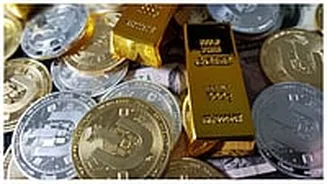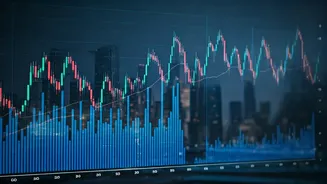Bond Yields Overview
The US bond yield saw an increase, which played a pivotal role in shaping the day's market dynamics. This rise was not an isolated event; it occurred within
a broader context of evolving trade relations, particularly between the US and China. The positive developments in trade talks, specifically the progress towards a US-China trade deal, served as a catalyst, prompting investors to shift away from safe-haven assets. This change in sentiment subsequently led to a decline in gold prices, as the demand for this traditional safe haven weakened. The prevailing sentiment shifted towards riskier assets, supported by the expectation of a more stable economic outlook due to the trade deal progress, thereby influencing various other market segments.
Gold's Reaction Examined
Gold experienced a downturn, marking its first weekly decline since mid-August. This shift in gold's trajectory was directly linked to the progress in the US-China trade negotiations. As positive news emerged, the perceived need for safe-haven assets like gold diminished. Investors, sensing reduced uncertainty, started diverting their capital towards riskier investment avenues. The decline in gold prices acted as a visual indicator of the market's evolving risk appetite and the decreasing reliance on traditional hedges against economic turmoil. This shift underscored how global events can rapidly alter investor sentiment, thereby impacting the value of assets considered safe havens.
Equities on the Rise
Both Asian and US equities displayed positive performance, reflecting the optimism in the market. This surge in equities was a direct response to the encouraging developments related to the US-China trade deal. Investors gained confidence in the economic outlook, resulting in an increased appetite for equities. This phenomenon illustrated the interconnectedness of global markets, where positive developments in trade could catalyze a widespread rally across various equity markets. The collective surge in equities across different geographical locations signaled a shared sentiment of economic optimism, driven by the prospect of reduced trade tensions and enhanced global stability.
Crude Oil's Movement
Crude oil prices witnessed an upward trend during the period under observation, echoing the prevailing market sentiment. This rise in crude oil prices often coincides with increased investor confidence and expectations of stronger economic growth. When trade agreements progress, it frequently leads to projections of greater industrial activity and increased demand for energy resources like crude oil. This positive influence demonstrated how political and economic developments can significantly influence the movement of commodity prices, showcasing the intricate links between market forces and global events.
Currency Market Insights
Asian currencies experienced gains, reflecting the improved sentiment in the market. The positive trajectory of Asian currencies was associated with the overall increased confidence among investors, spurred by advancements in trade talks. When trade relations improve, it often leads to a strengthening of currencies in regions that are significant players in international trade. The trend demonstrated how global events can influence currency values, highlighting the importance of factors such as international relations and investor confidence in shaping currency markets. This interconnectedness underpins the dynamics of global finance, revealing how changes in one area can trigger ripple effects throughout various markets.















